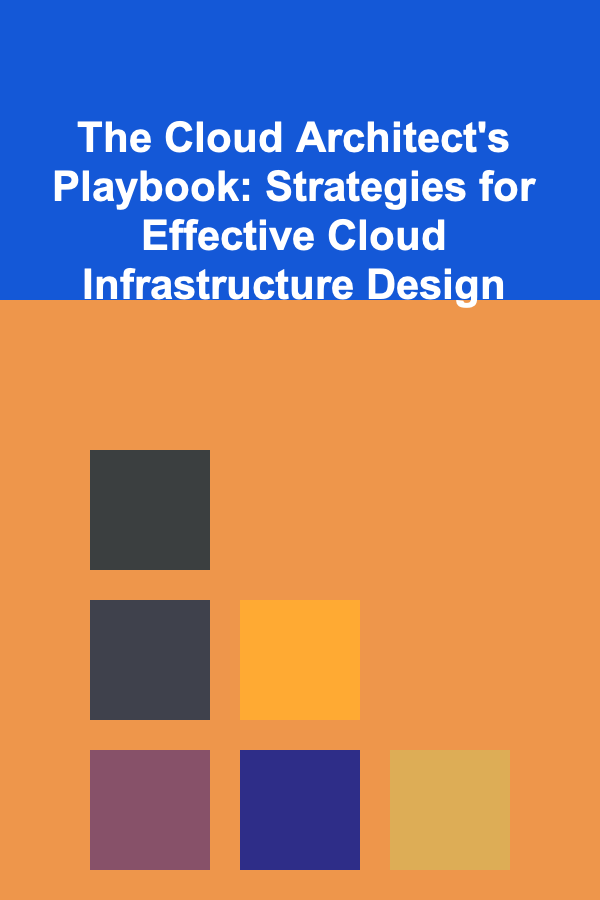
How to Align Performance Management with Career Development Planning
ebook include PDF & Audio bundle (Micro Guide)
$12.99$11.99
Limited Time Offer! Order within the next:

In today's competitive business landscape, organizations are increasingly recognizing the importance of aligning performance management with career development planning. The focus is shifting away from simply evaluating employees' past performance to building a more holistic approach that fosters long-term growth, engagement, and retention. The alignment of these two critical processes not only helps organizations to meet their strategic objectives but also empowers employees to achieve their career aspirations while contributing meaningfully to the success of the organization.
In this article, we will explore how organizations can strategically align performance management with career development planning to create a mutually beneficial relationship between the individual and the organization.
Understanding Performance Management and Career Development
What is Performance Management?
Performance management is an ongoing process that involves setting expectations, monitoring progress, providing feedback, and evaluating employee performance against predefined goals and competencies. It is a critical function that helps organizations ensure that employees are meeting their objectives, contributing to organizational goals, and performing effectively within their roles.
Performance management includes:
- Goal Setting: Establishing clear and measurable goals aligned with business objectives.
- Continuous Feedback: Providing regular, constructive feedback to employees.
- Performance Appraisal: Assessing performance based on key performance indicators (KPIs) and competencies.
- Employee Development: Identifying areas of growth and providing training and resources to improve performance.
- Recognition and Rewards: Acknowledging achievements and rewarding contributions.
What is Career Development?
Career development is the process through which individuals enhance their skills, gain new knowledge, and prepare for future roles within an organization. It is a personalized journey that empowers employees to pursue growth opportunities that align with both their personal interests and organizational needs. Career development is not just about climbing the corporate ladder; it is about aligning individual strengths, values, and aspirations with the right roles and career paths.
Key elements of career development include:
- Career Planning: Mapping out short-term and long-term career goals and paths.
- Skills Development: Identifying the skills required for career progression and acquiring those skills through learning and training.
- Mentorship and Coaching: Receiving guidance from senior leaders or peers to navigate career growth.
- Job Rotation and Mobility: Gaining experience in different roles or departments to enhance skills and broaden expertise.
- Work-Life Balance: Recognizing that career development should accommodate employees' personal needs and aspirations.
The Intersection of Performance Management and Career Development
Performance management and career development are closely interlinked but often operate in silos within organizations. While performance management focuses on evaluating and optimizing current job performance, career development aims to prepare employees for future growth and success. The key to aligning these two processes lies in recognizing that employee performance is not just about meeting immediate goals but also about fostering the skills and competencies that will be necessary for future roles within the organization.
For organizations to stay competitive and retain top talent, they must create a seamless connection between the short-term focus of performance management and the long-term goals of career development. By doing so, they create a work environment that nurtures both current and future employee success.
Steps to Align Performance Management with Career Development Planning
1. Integrate Career Development Goals into Performance Reviews
One of the first steps in aligning performance management with career development planning is to incorporate career development discussions into performance appraisals. Traditional performance reviews often focus solely on past performance, but to support long-term career growth, employees should be encouraged to discuss their career goals and aspirations during these reviews.
Here's how to integrate career development into performance reviews:
- Include Career Goals in Appraisal Forms: Ensure that the appraisal form includes a section where employees can set short- and long-term career goals.
- Discuss Career Development Needs: Encourage managers to discuss the skills and competencies employees need to develop in order to achieve their career aspirations.
- Create a Development Plan: Use the performance review as an opportunity to create a personalized development plan that aligns with the employee's career goals.
By linking career development goals with performance evaluations, employees are able to see how their current performance impacts their career progression.
2. Develop a Holistic Competency Model
A well-designed competency model that includes both technical skills and soft skills is crucial for aligning performance management with career development planning. Competencies are the behaviors, skills, and knowledge that are essential for performing well in a given role and can be transferred across different roles or career paths within the organization.
When developing a competency model, organizations should:
- Identify Core Competencies: Define the core competencies required for success at each level within the organization.
- Incorporate Leadership Skills: Include competencies related to leadership, decision-making, and team collaboration to encourage employees to develop the skills needed for higher-level roles.
- Provide Growth Opportunities: Map out the competencies required for future roles and provide employees with opportunities to develop those competencies through training, job rotations, or cross-functional projects.
By using a comprehensive competency model, performance management can be aligned with career development by helping employees identify the skills they need to succeed in their current roles and prepare for future roles.
3. Offer Continuous Feedback and Development
Traditional performance management processes often include annual or semi-annual reviews, but this infrequent feedback cycle can fail to address ongoing development needs. To align performance management with career development, organizations should prioritize continuous feedback and development.
Managers should provide regular, constructive feedback that not only focuses on current performance but also helps employees identify areas for growth that align with their career aspirations. A few strategies to implement continuous feedback include:
- Regular Check-Ins: Schedule regular one-on-one meetings between employees and managers to discuss performance, career goals, and development opportunities.
- 360-Degree Feedback: Gather feedback from peers, subordinates, and other stakeholders to provide employees with a well-rounded perspective on their strengths and areas for improvement.
- Coaching and Mentoring: Establish mentorship programs where experienced leaders can guide employees in their career development.
By providing ongoing feedback, employees can make adjustments in real-time, enhancing their performance and preparing for future opportunities.
4. Align Training and Development Programs with Career Goals
Training and development are central to career advancement, and performance management should identify the skills and knowledge required to support career development. By offering tailored learning and development programs, organizations can equip employees with the tools they need to improve performance and progress in their careers.
Here's how to align training programs with career development:
- Identify Skill Gaps: During performance appraisals, identify specific skill gaps that may be hindering the employee's progress toward their career goals.
- Offer Developmental Training: Provide access to training resources, such as leadership programs, technical skills courses, and soft skills development.
- Encourage Cross-Functional Exposure: Provide employees with opportunities to work in different roles or departments to develop new skills and broaden their expertise.
By offering training and development that aligns with both performance and career development, employees can continuously improve their performance while preparing for future growth.
5. Foster a Culture of Career Development
To align performance management with career development, organizations need to foster a culture that encourages growth, learning, and continuous improvement. Employees should feel supported in their career aspirations and be given the tools and resources necessary to achieve them.
Here's how to create a culture of career development:
- Leadership Support: Leaders should openly support and advocate for employee development, reinforcing the importance of career growth and performance excellence.
- Employee Empowerment: Encourage employees to take ownership of their career development and provide them with the autonomy to explore growth opportunities.
- Transparent Career Paths: Provide clear career paths within the organization, ensuring that employees understand the steps required to move to the next level.
A culture that promotes career development not only enhances employee engagement but also drives organizational success by ensuring that employees are committed to both their personal growth and the organization's goals.
6. Recognize and Reward Career Milestones
Recognition is a powerful motivator, and acknowledging employees' career development achievements helps to reinforce the importance of aligning performance with career growth. Employees who see that their career milestones are recognized are more likely to stay motivated and engaged in their roles.
Ways to recognize and reward career milestones include:
- Promotions and Role Changes: Celebrate promotions or role changes that align with the employee's career development goals.
- Certificates and Awards: Provide formal recognition for completing training programs or achieving career development milestones.
- Public Acknowledgement: Highlight employees' achievements in company-wide communications or at team meetings.
Recognition reinforces the connection between performance and career development, encouraging employees to continue striving for excellence.
Conclusion
Aligning performance management with career development planning is a strategic approach that benefits both employees and organizations. By integrating career development into performance appraisals, creating a competency model, providing continuous feedback, offering tailored training programs, fostering a culture of growth, and recognizing career milestones, organizations can support employee development while driving overall performance. This holistic approach not only enhances employee satisfaction and engagement but also positions organizations for long-term success in a competitive marketplace.
When organizations invest in aligning performance management with career development, they create an environment where both the individual and the organization can thrive, fostering a culture of continuous growth and achievement.
Reading More From Our Other Websites
- [Toy Making Tip 101] Eco‑Friendly Fun: Making Sustainable Fabric Toys at Home
- [Simple Life Tip 101] Best Simple‑Life Meal Prep Strategies for People with Diabetes
- [Home Space Saving 101] How to Turn Your Attic into Organized Storage: Space-Saving and Safety Tips
- [Home Soundproofing 101] How to Maximize Soundproofing in Small Spaces
- [Organization Tip 101] How to Create a Simple and Efficient Cooking Space
- [Home Security 101] How to Use ADT Motion Sensors to Protect Your Property
- [Organization Tip 101] How to Store Sports Equipment in a Compact Space
- [Home Party Planning 101] How to Make Mocktails: Refreshing Non-Alcoholic Party Drinks
- [Home Maintenance 101] How to Simplify Your Life with Essential Home Organization Tips for Every Room
- [Home Maintenance 101] How to Maintain Your Home's Landscaping for a Beautiful Yard

How to Create a Spring Cleaning Checklist for Your Living Room
Read More
How to Decorate Your Home with Minimalist Style for Less
Read More
How to Financially Prepare for Major Life Transitions
Read More
The Cloud Architect's Playbook: Strategies for Effective Cloud Infrastructure Design
Read More
Volunteering: The Secret to Gaining Experience and Networking
Read More
Researching the Impact of EVs on the Power Grid: A Comprehensive Guide
Read MoreOther Products

How to Create a Spring Cleaning Checklist for Your Living Room
Read More
How to Decorate Your Home with Minimalist Style for Less
Read More
How to Financially Prepare for Major Life Transitions
Read More
The Cloud Architect's Playbook: Strategies for Effective Cloud Infrastructure Design
Read More
Volunteering: The Secret to Gaining Experience and Networking
Read More